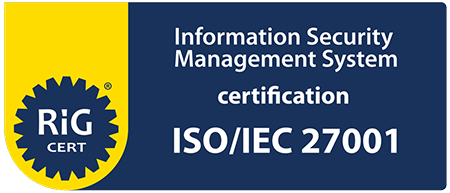In 2024, Human Resources Management will focus on improvements in the approach, management, and experience of work.
There are three main changes driving this transformation. These are the basis of 10 HR trends, showing significant progress in the way HR functions and changes the overall work environment.
HR professionals will play a critical role in shaping and improving various aspects of work dynamics by adopting new strategies, technologies or approaches to meet changing workforce and workplace needs.
I. HR will realign its priorities to reflect the changing needs of today’s workforce.
II. HR strategies will be reimagined with a focus on creating value for internal customers.
III. HR professionals’ goal will be to facilitate meaningful change in the world of work.
Let’s have a look at the 10 HR trends given these anticipated changes.
I. Realignment of HR Priorities
The role of HR is undergoing significant transformation in the current business environment, which requires rethinking some of the traditional frameworks of HR.
There are various factors that contribute to the current development and transformations in the field of human resources - global environmental changes, legislative changes, social movements, unexpected stagnation of the HR function.
Also, with the increasing integration of technology in the workplace, we need to reevaluate how we use this technology. This reappraisal aims to increase worker productivity, ensure the inclusion of previously overlooked workers, and maximize the potential impact of human resources.
This makes it is clear Human Resources must readjust its priorities in the coming 2024.
In 2024, HR won’t simply adapt to change, but will take an active role in shaping a more sustainable future of inclusivity with a strong focus on business goals.
The first 3 trends in the field of Human Resources
1. Solving the productivity paradox.
With the significant economic changes, market upheavals and technological advances of the last 20 years, productivity has always been the top priority for HR. Despite successful initiatives around employee engagement, experience, and well-being, there is still a noticeable gap when it comes to improving worker productivity.
Productivity gains have been more significant in manufacturing-related sectors, where processes have become more streamlined and efficient. However, this improvement is not as pronounced in other sectors, especially those related to office and administrative work. This situation creates an opportunity for HR to actively seek and implement solutions to address the lack of productivity growth in office-based roles.
Goal: 2024 — Year of Productivity
HR in action: Finding ways to increase productivity
2. Using the hidden workforce
At a time of historically low unemployment, when companies are becoming increasingly desperate for talent, HR is expected to invest in a workforce that is often overlooked: the hidden workforce.
It’s expected that in 2024 there will be positive changes or new opportunities for this segment of the workforce.
Purpose: Expanding the scope of talent acquisition or development
HR in action: Removing barriers to work
3. Human resources are the driver of adaptation to climate change
While the role of HR in sustainability is relatively new, it’s fast becoming crucial as companies seek to adapt to the challenges of climate change by ensuring their workforces are resilient, informed and prepared for ecological disruptions.
HR professionals must shift their focus by taking responsibility as sustainable practices become increasingly imperative for organizations.
First, legislation related to sustainable development is changing around the world.
The EU introduced the Corporate Sustainability Reporting Directive, the UK introduced Sustainability Disclosure Standards on climate risk reporting, and the US Securities and Exchange Commission (SEC) is drafting climate change disclosure rules.
Leading companies are beginning to invest in climate change adaptation strategies, a practice that involves adapting to existing and expected impacts of climate change, rather than focusing solely on efforts to mitigate or reduce the causes of those changes.
Unilever launched water stewardship programs to preserve water quality and manage supply risks around factories, such as Prabhat in India.
Nestle is promoting intercropping to maintain soil fertility and build climate change-resilient supply lines.
Bayer is investing in the development of seeds varieties that are more resistant to heat, drought, wind and flooding.
Human resources are a big part of implementing policy and must work to help organizations adapt to the new climate reality.
Goal: Address climate challenges to ensure business continuity
HR in action: Adopting climate change adaptation strategies for future sustainability
II. Changes in the operational model of HR
The way HR operates has remained largely unchanged despite the changes in the world and the dynamics of the business environment over the past two decades.
Typically, the overall organizational structure within Human Resources is based on providing effective services through distinct roles. This structure includes the following components: dedicated centers of excellence, client-facing business partners and centralized administrative teams.
In today’s complex world, adding tangible value requires holistic solutions, instead of isolated strategies.
This results in the consolidation of centers of excellence in areas of solutions that impact the business. Effectively performing this task requires a broader skill set as well as a different value proposition. In this context of HR restructuring or consolidation, clear and transparent communication is critical to the success of the changes.
HR also faces the challenge of adapting to work in an environment of transparency and social connectivity.
Finally, HR departments will redefine and assert its identity within the organization. HR is growing into a field supported by evidence-based practices, data, and technology that works towards the achievement of company goals.
However, HR professionals still see themselves as playing a supporting role in the business rather than drivers of change. This suggests a need for a new way of thinking about the profession.
2024 will see a transformation of HR professionals' approach to their role and influence in the organization.
The following 3 trends will contribute to this transformation.
4. From silos to solutions
Business models have evolved to become more digital and adaptable to changing consumer needs. Therefore, the isolated and functional nature of Ulrich's popular operating model has been questioned in terms of its ability to provide cross-functional and end-to-end business solutions.
*Dave Ulrich's model reveals how the HR department in organizations is organized and how it accomplishes its goals. It identifies four roles for HR professionals, namely: strategic partner, change agent, administrative expert and employee champion. These are all four possible career paths for HR professionals.
In the long term, Ulrich's model is expected to evolve into a new HR operating model that better aligns with the organization's business strategy. This evolution will begin in 2024, when individual HR services will begin to integrate into fully developed solutions.
Objective: Deconstructing centers of excellence and reimagining them as dynamic and adaptive "people-centric solution areas".
HR in action: Consolidating critical skills that make an impact
5. HR activity in change management
Throughout history, the HR function has been transformed many times — human resources, human capital, strategic partner, People and Culture specialists, and more recently, Employee Experience specialists.
To truly rebrand and reposition HR to enable and drive business transformation, however, a fundamental shift beyond a name change is needed.
In the past, HR has not prepared itself for optimal contribution, often neglecting skills development, digital adoption and confidence in its own ability to create value, resulting in a function reduced to the carrying out of transactions and superficial operations.
This affects the image of HR. According to a survey of 1000 HR leaders and CEO, conducted by the British software company, 73% of HR leaders and 76% of senior executives believe their HR team focuses primarily on processes, and 63% of top management of the companies see the role of HR as administrative. This is also one of the reasons why there are layoffs in HR teams.
In 2024, HR professionals are expected to change the current situation, reinvent their role and actively engage in strategic conversations within the organization.
Objective: Creation of a strategic vision for HR
HR in action: Taking on the challenge




